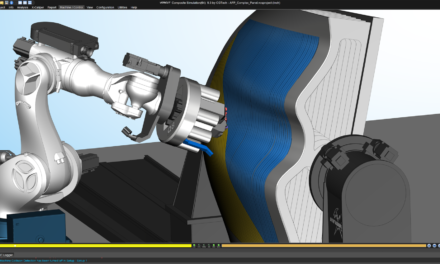Lead consultants within the Digital Strategy & Value Engineering team at Infor, Brad Revell and Bobby Charlton share their five top tips to unearth untapped potential, and highlight the best approach in optimising value in any organisation.
Whether it’s a full-scale business transformation, system overhaul, or standard upgrade, technology projects shine a spotlight on potential inefficiencies and areas for improvement for manufacturers. But because projects are typically focused on a series of finite goals, a wealth of untapped potential often sits outside of the project scope.
Unearthing and addressing these inefficiencies is undoubtedly an enormous undertaking. More often than not, manufacturers don’t know what they don’t know, and in focusing on specific problems or areas in need of improvement, it’s easy to fall into a trap of not being able to see the wood for the trees.
Ensure the right audience
While many projects are led by the IT director or department head, an organisation-wide deep-dive and analysis relies upon access to the C-Suite in order to gain a full perspective of every area within a manufacturing organisation. In doing this, not only can wider challenges which might otherwise have been overlooked in the quest to solve more pressing, or visible problems, be understood, but department and process interdependencies, and perceived value of improvements can be fully mapped and contextualised.
Adopt the right methodology
In embarking upon a design workshop, having the right methodology is absolutely crucial. Structured conversations, and a clear, proven, step by step approach to workshops, with feedback mechanisms built in, is pivotal in being able to capture and process accurate, in-depth insights in a way they can be processed.
The best manufacturing projects typically draw upon Six Sigma or Lean methodologies and value engineering applies similar principles in getting the most out of the process. Having pre-set questions, asked in a set order, with signposts to explore additional fields where relevant, is imperative in ensuring nothing is missed, and that the knowledge of each executive involved is fully captured.
Focus on facilitation
Facilitation skills are crucial in developing a rapport, building confidence and trust, and ultimately getting the best information from an organisation. Through a combination of experience of comparable projects from which to draw upon, and emotional intelligence to pick up on cues which might prompt the right questions and lead to higher quality conversations, the very best information can be extracted, which inevitably leads to the best outcomes.
Leave no stone unturned
It goes without saying that in undertaking a deep dive into an organisation’s potential inefficiencies and opportunities for improvement, no stone must be left unturned.
The definition of value in all of its forms must be outlined from the outset, encompassing not only operational and capital expenditure, but areas such as skills and resource maximisation; decision-making; reporting; and overall goodwill and motivation.
A typical exercise might see the design workshop look at, say, ten process improvements per area. For performance management for example, it might span a number of processes from reduced time to collate company reports, to find issues and to generate action lists; to Improved margin analysis, looking at management of ingredient, ingredient attribute, labour and equipment utilisation, while supply chain findings could include scope for advanced warning of bottlenecks and increased control over lead times, to transport cost visibility and expedited freight.
A strong design thinking workshop will garner an in-depth understanding of these pain points and replicate a similar approach across every department, from finance to talent management. Through navigating the numerous layers and getting to the bottom of the far-reaching challenges an organisation really has, even the smallest improvements in a given area, scaled across the organisation, can equate to huge amounts of value.
Look after the pennies..
There is no typical organisation when it comes to addressing inefficiencies and promoting value, but there are of course a number of pain points and areas subject to unfulfilled potential which are common across many companies. A strategy and outcome exercise undertaken in conjunction with a food and beverage organisation for example could quite reasonably identify potential in maintenance for example, spanning a number of processes from increased overall equipment effectiveness (OEE) and reduced contamination risk to extended asset lifetime and reduced energy costs, while quality might focus on bi-directional ingredient source and usage traceability and faster, more targeted recalls.
While the task might seem insurmountable and is by no means straightforward, through drawing upon experience, adopting the right approach, with the right people, and in a clear structured way, insights which stand to transform can be applied to project briefs, mapped against best in class software solutions, and used to drive enormous scope for improvement across the organisation.




